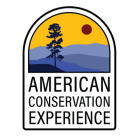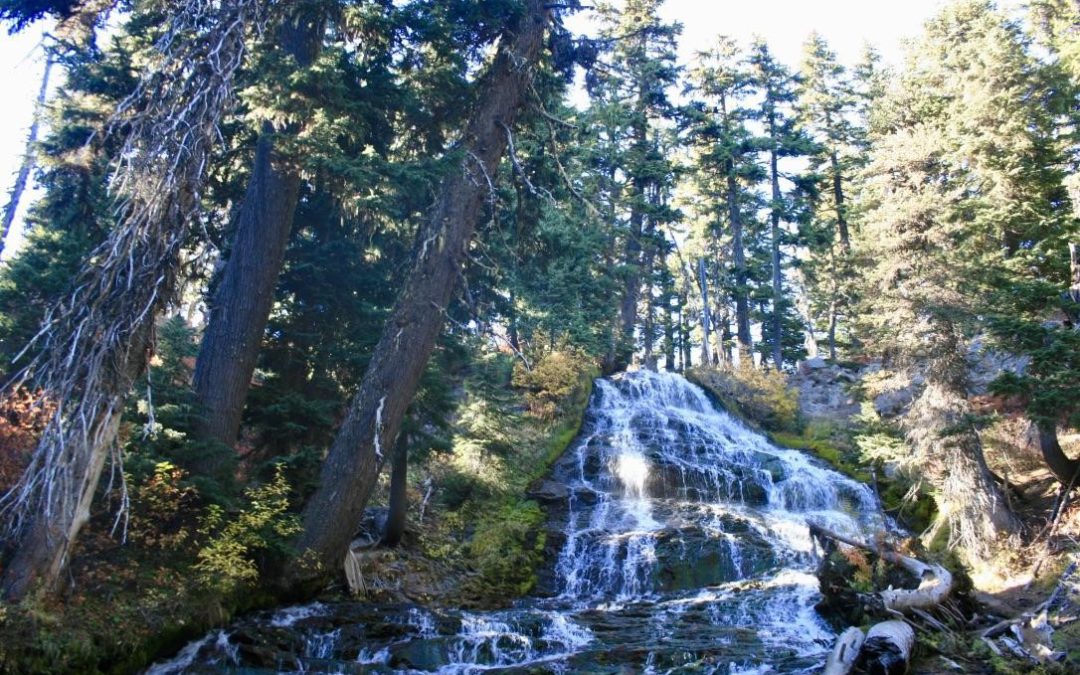On the Oregon Trail
By: Michelle Ferguson and Angelica Varela
As we said our final goodbyes to Texas and the ranch house that stood high on a hill, we made our way to Kearney, Nebraska, then followed the Oregon Trail along I-80 west to the Pacific. At this set of refuges, we learned more about various management projects that refuges take on in efforts to restore beneficial ecosystems. We also had some fun surveying and participating in Urban National Wildlife Refuge Day and Birdfest & Bluegrass refuge events.
Rainwater Basin Wetland Management District
Landing in Nebraska, we surveyed visitors at Rainwater Basin WMD, the only Wetland Management District participating in the survey this year. While being on the lookout to contact waterfowl hunters hiding in the wetlands, we learned about the restoration efforts that take place at the refuge. Rainwater Basin provides important wetland habitat for migratory birds, including waterfowl, shorebirds, and the endangered Whooping Crane. One of the many threats to these habitats is sediment build up from surrounding farm areas, making restoration of Waterfowl Production Areas (WPAs) in the district a high priority. In 2018, Rainwater Basin removed excess sediment from the Atlanta WPA, their largest restoration effort to date. Atlanta WPA contains a large wetland basin which provides accessible water for migratory waterfowl. Restoration efforts encouraged the growth of native vegetation, provided for spring foraging, and improved the overall function of the wetland. Atlanta was a major success story and landed in a local newsletter. Restoration WIN!
After surveying waterfowl hunters and learning about wetland restoration in Nebraska, we continued our journey along the historic Oregon Trail, which roughly follows Interstate 80 west to Portland, Oregon. Lucky for us we took an SUV instead of a covered wagon. In the Pacific Northwest we were off to survey Steigerwald Lake, Tualatin River, and Ridgefield NWRs.
Steigerwald Lake National Wildlife Refuge
Steigerwald Lake NWR is located right along the Columbia River Gorge, or as one of our favorite young visitors called it, “The River George!” Similar to Rainwater Basin WMD, Steigerwald Lake has several large collaborative restoration projects underway. The refuge has plans to reconnect refuge floodplains to the Columbia River by removing portions of the Columbia River dike. This restoration will re-establish habitat for steelhead and cutthroat trout along with other native species, including salmon populations that many locals depend on. On a crisp fall evening we had the opportunity to walk the part of the dike that will be removed. That night we attended a bat walk hosted by the refuge as a celebration of the many volunteers who dedicate their time helping out on the refuge. On our walk we spotted a great horned owl silhouetted by the moonlight, perched high on a tree right off the dike. The work for this restoration project, as many restoration efforts in the refuge system, has undergone several years of dedicated planning and partnerships committed to making meaningful ecological progress on public lands.
Back on the refuge in the daylight we admired the October colors while hiking the Gibbons Creek Wildlife Art Trail. Along the boardwalk we witnessed an American bittern hunting for food. The bittern is elusive as its brown plumage is well camouflaged in the cattails along ponds. That afternoon visitors eagerly scribbled the bird’s name on the “wildlife sightings” whiteboard hung at the trailhead.
Tualatin River National Wildlife Refuge
While we were at Tualatin River NWR, one of the nation’s first urban wildlife refuges, September 29 was officially recognized as Urban National Wildlife Refuge Day! With 80% of Americans living in metro areas like Portland, the refuge system focuses on extending natural spaces to communities who otherwise wouldn’t have access in urban areas. On this special day, we were able to see the staff and community partners at Tualatin River NWR join together to commemorate “U in Nature, at Your Urban Wildlife Refuge Day.” This event was full of fun activities for visitors to participate in, including stations where youth could learn how to fish and practice archery. There were also guided interpretive walks, a salmon migration obstacle course, and the opportunity to meet “Teddy” Roosevelt. We enjoyed getting to know the supportive community that is the solid grounding of Tualatin River NWR. The refuge was established through the strong voice of local residents banding together with a desire for a functioning natural area in an urban setting. Some of our highlights at Tualatin included watching a pair of bald eagles frequent our survey area. We also grew fond of the wooly bear, a charismatic freeze-tolerant caterpillar who can live for up to a decade, scurrying across refuge trails!

Kim Strassburg, visitor services manager, welcomes visitors with “Teddy” Roosevelt on Urban National Wildlife Refuge Day at Tualatin NWR. September 2018. Photo by Angelica Varela.

Archery station, Urban National Wildlife Refuge Day at Tualatin NWR. September 2018. Photo by Angelica Varela.
Ridgefield National Wildlife Refuge
Ridgefield NWR holds a special place in the hearts of birders and naturalists. Every October volunteers put together a highly anticipated weekend of events and live music to celebrate, fittingly called Birdfest & Bluegrass. Rain was in the forecast the weekend of Birdfest, but that did not stop visitors from fully enjoying all that the festival had to offer. We surveyed many visitors coming to join the celebration, which included naturalist led hikes, Sandhill Crane Tours at the wildlife drive, and arts and crafts around the Chinookan-style cedar Cathlapotle Plankhouse. After sampling we enjoyed touring the plankhouse ourselves which would soon be closed for the season. We also attended the Chinookan salmon bake, which offered visitors traditionally baked salmon and seafood stew.

Chinookan-style salmon bake at Birdfest & Bluegrass Festival. October 2018. Photo by Michelle Ferguson.
During the month we stayed in the Pacific Northwest we took full advantage of days we weren’t sampling to explore Oregon. One of our most memorable adventures was exploring the Columbia Gorge and seeing all the beautiful waterfalls in the surrounding area.
We are constantly inspired to get a first hand look at the devoted teamwork poured into restoration projects and community events at every refuge. It takes driven partners, who are passionate about managing these public lands for the enjoyment of wildlife and communities around. Take the opportunity to embrace the National Wildlife Refuge System. It’s wild, it’s yours!
Until next time,
Road Warriors- Angelica and Michelle







